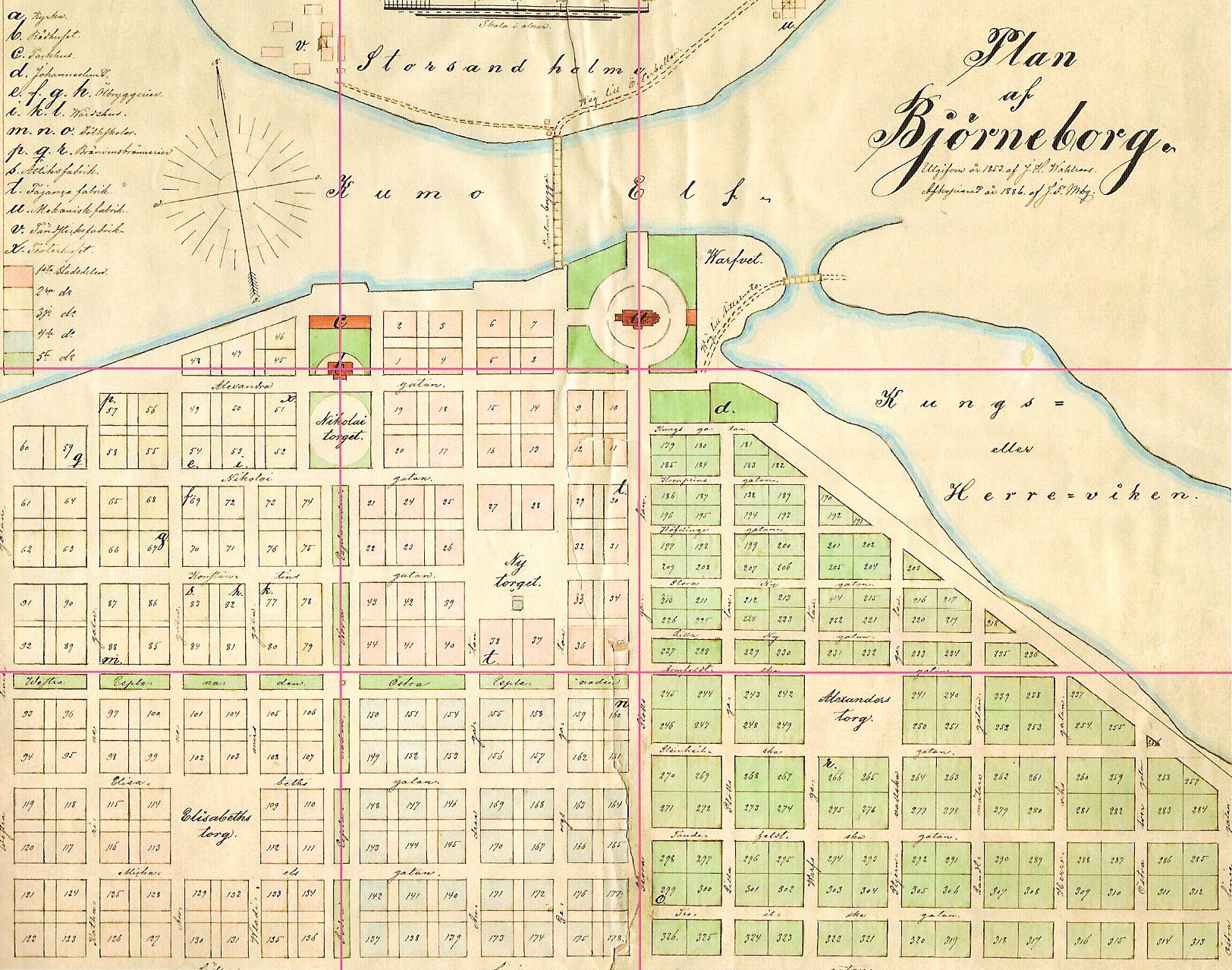|
World Urbanism Day
The international organisation for World Urbanism Day, also known as "World Town Planning Day", was founded in 1949 by the late Professor Carlos Maria della Paolera of the University of Buenos Aires, a graduate at the Institut d'urbanisme in Paris, to advance public and professional interest in planning. It is celebrated in more than 30 countries on four continents each November 8. See also * Urbanism * Urban planning * New Urbanism * Institut d'Urbanisme de Paris (French Wikipedia) References External links American Planning Association: World Town Planning Day World Urbanism Dayfrom WN Network {{Urban Planning Urban planning Planned cities Garden suburbs A garden is a planned space, usually outdoors, set aside for the cultivation, display, and enjoyment of plants and other forms of nature. The single feature identifying even the wildest wild garden is ''control''. The garden can incorporate both ... November observances International observances ... [...More Info...] [...Related Items...] OR: [Wikipedia] [Google] [Baidu] |
University Of Buenos Aires
The University of Buenos Aires ( es, Universidad de Buenos Aires, UBA) is a public university, public research university in Buenos Aires, Argentina. Established in 1821, it is the premier institution of higher learning in the country and one of the most prestigious universities of Ibero-America. It has educated 17 President of Argentina, Argentine presidents, produced four of the country's five Nobel Prize laureates, and is responsible for approximately 40% of the country's research output. The ''QS World University Rankings'' currently places the UBA at number 67, the highest ranking university in the Spanish-speaking world. The university's academic strength and regional leadership make it attractive to many international students, especially at the postgraduate level. Just over 4 percent of undergraduates are foreigners, while 15 percent of postgraduate students come from abroad. The Faculty of Economic Sciences, University of Buenos Aires, Faculty of Economic Sciences has t ... [...More Info...] [...Related Items...] OR: [Wikipedia] [Google] [Baidu] |
Urban Planning
Urban planning, also known as town planning, city planning, regional planning, or rural planning, is a technical and political process that is focused on the development and design of land use and the built environment, including air, water, and the infrastructure passing into and out of urban areas, such as transportation, communications, and distribution networks and their accessibility. Traditionally, urban planning followed a top-down approach in master planning the physical layout of human settlements. The primary concern was the public welfare, which included considerations of efficiency, sanitation, protection and use of the environment, as well as effects of the master plans on the social and economic activities. Over time, urban planning has adopted a focus on the social and environmental bottom-lines that focus on planning as a tool to improve the health and well-being of people while maintaining sustainability standards. Sustainable development was added as one of th ... [...More Info...] [...Related Items...] OR: [Wikipedia] [Google] [Baidu] |
List Of Minor Secular Observances
Lists of holidays by various categorizations. Religious holidays Abrahamic holidays (Middle Eastern) Jewish holidays *Chag HaMatzot (Feast of Unleavened bread, Unleavened Bread – 7 days of consumption of matzo with wine and avoidance of leavened foods) *Hanukkah (Feast of Dedication; Also called the Festival of Lights – Commemoration of the rededication of the Jerusalem Temple) *Pesach (Passover – Deliverance of Jews from slavery in Egypt) **Lag BaOmer (A holiday celebrated on the 33rd day of the Counting of the Omer, which occurs on the 18th day of the Hebrew month of Iyar) *Purim (Feast of Lots – Deliverance of Jews in Persia from extermination by Haman) *Reishit Katzir (Feast of Bikkurim (First-fruits), Firstfruits – Collecting and waving of grain bundles (barley or wheat); Occurs during the 7 days of unleavened bread after the Sabbath) *Rosh Hashanah (Jewish New Year – First day of Tishrei every year) *Shabbat (The 7th Day Sabbath – The day of rest and ... [...More Info...] [...Related Items...] OR: [Wikipedia] [Google] [Baidu] |
Urbanism
Urbanism is the study of how inhabitants of urban areas, such as towns and cities, interact with the built environment. It is a direct component of disciplines such as urban planning, which is the profession focusing on the physical design and management of urban structures and urban sociology which is the academic field the study of urban life and culture. Many architects, planners, geographers, and sociologists investigate the way people live in densely populated urban areas. There is a wide variety of different theories and approaches to the study of urbanism. However, in some contexts internationally, ''urbanism'' is synonymous with urban planning, and ''urbanist'' refers to an urban planner. The term ''urbanism'' originated in the late nineteenth century with the Spanish engineer-architect Ildefons Cerda, whose intent was to create an autonomous activity focused on the spatial organization of the city. Urbanism's emergence in the early 20th century was associated with the ... [...More Info...] [...Related Items...] OR: [Wikipedia] [Google] [Baidu] |
Urban Planning
Urban planning, also known as town planning, city planning, regional planning, or rural planning, is a technical and political process that is focused on the development and design of land use and the built environment, including air, water, and the infrastructure passing into and out of urban areas, such as transportation, communications, and distribution networks and their accessibility. Traditionally, urban planning followed a top-down approach in master planning the physical layout of human settlements. The primary concern was the public welfare, which included considerations of efficiency, sanitation, protection and use of the environment, as well as effects of the master plans on the social and economic activities. Over time, urban planning has adopted a focus on the social and environmental bottom-lines that focus on planning as a tool to improve the health and well-being of people while maintaining sustainability standards. Sustainable development was added as one of th ... [...More Info...] [...Related Items...] OR: [Wikipedia] [Google] [Baidu] |
New Urbanism
New Urbanism is an urban design movement which promotes environmentally friendly habits by creating walkable neighbourhoods containing a wide range of housing and job types. It arose in the United States in the early 1980s, and has gradually influenced many aspects of real estate development, urban planning, and municipal land-use strategies. New Urbanism attempts to address the ills associated with urban sprawl and post-Second World War suburban development. New Urbanism is strongly influenced by urban design practices that were prominent until the rise of the automobile prior to World War II; it encompasses ten basic principles such as traditional neighborhood development (TND) and transit-oriented development (TOD). These ideas can all be circled back to two concepts: building a sense of community and the development of ecological practices. The organizing body for New Urbanism is the Congress for the New Urbanism, founded in 1993. Its foundational text is the ''Charter of ... [...More Info...] [...Related Items...] OR: [Wikipedia] [Google] [Baidu] |
Planned Cities
A planned community, planned city, planned town, or planned settlement is any community that was carefully planned from its inception and is typically constructed on previously undeveloped land. This contrasts with settlements that evolve in a more ''ad hoc'' and organic fashion. The term ''new town'' refers to planned communities of the new towns movement in particular, mainly in the United Kingdom. It was also common in the European colonization of the Americas to build according to a plan either on fresh ground or on the ruins of earlier Native American villages. Planned capitals A planned capital is a city specially planned, designed and built to be a capital. Several of the world's national capitals are planned capitals, including Canberra in Australia, Brasília in Brazil, Belmopan in Belize, New Delhi in India, Abuja in Nigeria, Islamabad in Pakistan, Naypyidaw in Myanmar (Burma) and Washington, D.C. in the United States, and the modern parts of Astana in Kaza ... [...More Info...] [...Related Items...] OR: [Wikipedia] [Google] [Baidu] |
Garden Suburbs
A garden is a planned space, usually outdoors, set aside for the cultivation, display, and enjoyment of plants and other forms of nature. The single feature identifying even the wildest wild garden is ''control''. The garden can incorporate both natural and artificial materials. Gardens often have design features including statuary, follies, pergolas, trellises, stumperies, dry creek beds, and water features such as fountains, ponds (with or without fish), waterfalls or creeks. Some gardens are for ornamental purposes only, while others also produce food crops, sometimes in separate areas, or sometimes intermixed with the ornamental plants. Food-producing gardens are distinguished from farms by their smaller scale, more labor-intensive methods, and their purpose (enjoyment of a hobby or self-sustenance rather than producing for sale, as in a market garden). Flower gardens combine plants of different heights, colors, textures, and fragrances to create interest and delight the s ... [...More Info...] [...Related Items...] OR: [Wikipedia] [Google] [Baidu] |
November Observances
November is the eleventh and penultimate month of the year in the Julian and Gregorian Calendars, the fourth and last of four months to have a length of 30 days and the fifth and last of five months to have a length of fewer than 31 days. November was the ninth month of the calendar of Romulus . November retained its name (from the Latin ''novem'' meaning "nine") when January and February were added to the Roman calendar. November is a month of late spring in the Southern Hemisphere and late autumn in the Northern Hemisphere. Therefore, November in the Southern Hemisphere is the seasonal equivalent of May in the Northern Hemisphere and vice versa. In Ancient Rome, Ludi Plebeii was held from November 4–17, Epulum Jovis was held on November 13 and Brumalia celebrations began on November 24. These dates do not correspond to the modern Gregorian calendar. November was referred to as Blōtmōnaþ by the Anglo-Saxons. Brumaire and Frimaire were the months on which November ... [...More Info...] [...Related Items...] OR: [Wikipedia] [Google] [Baidu] |








